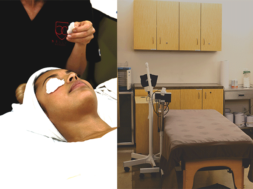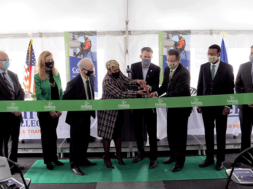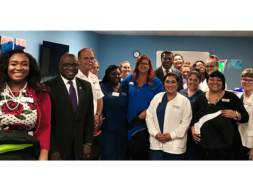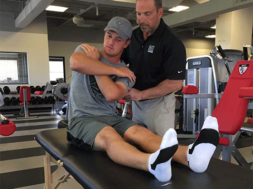
By Martha Lanaghen, CEO and Founder, The Sparrow Group
Classrooms are changing. Not only does the typical elementary or high school classroom in America look different from it did 10 years ago, but the teaching strategies are also very different. The result?
Students across the U.S. are coming into their college classrooms with different expectations.
Many of you have commented on the challenges this can create – grading standards have lowered. Homework skills are not fully developed. Executive function overall is lacking in many students that arrive at college unable to manage their time effectively, work well on a team, and/or communicate well in writing or verbally.
This increases the challenge we face in career schools as we do not educate for education’s sake – we serve students in order to prepare them for the world of work. To do this effectively, we have a few arrows in our quiver – smaller classes, more individualized attention through improved student services and high-touch career services, and, perhaps most importantly, we hire instructors that are or have been real-world practitioners.
This on the job experience makes career school instructors invaluable mentors and guides to the students they teach. It’s also true that because they are industry experts, they do not always have formal teacher educations.
This is why many institutions have dedicated countless resources to training their faculty so that they can become adept at the art of controlling a classroom, developing lesson plans, and creating safe and stimulating learning environment.
Instructional environments are changing in K-12 education
It’s impossible to keep up with every conceivable trend utilized in K-12 education, which is to say nothing of the fact that your classrooms today are filled with students that have come from such diverse backgrounds as homeschooling, private military academies, public schools, parochial schools and more.
What does this mean for the college classroom? It means that instructors need to be more creative and engaging than ever before.
It’s always been the right thing to do – but now it’s a mandate because students have come through schools that are leveraging new teaching strategies that give students more opportunities for self-directed learning and that shift the role of the instructor from “leader of the learning” to “facilitator of the classroom.” This subtle but profound shift changes everything in the learning dynamic.
Why does it matter to career schools?
The new teaching methods are perfectly in line with a career school’s need to prepare a student to shine in a job interview, and more importantly, to perform well when they are at their job after graduation. Many of these new teaching methods help students develop those Habits of Mind1 that are essential for future job and life success. Qualities like:
- Thinking and communicating with clarity and precision
- Thinking flexibly
- Listening with understanding and empathy
- Persisting
- Managing impulsivity
- Questioning and posing problems
These qualities (there are 16 in total), are rarely learned or reinforced through lecture, memorization, reading, worksheets or most of the more traditional classroom strategies. Which is why we are seeing exciting new teaching strategies that aim to put more control in the student’s hands, leverage the teacher’s time to focus on guiding the students, rather than directing them, and that builds the student’s self-management skills when the strategies are implemented effectively.
Our classrooms need to be prepared for this “new kind of student” if we want to increase engagement and retention rates – the new student simply will not sit still for traditional “chalk and talk” lectures that result in little interaction, a series of quizzes or tests, and then a final that asks them to regurgitate an entire course of information.
New learning themes
There are literally dozens of new “methods” that range from concrete concepts like Design Thinking, to more symbolic concepts like those that consolidate around “student agency” and/or “self-directed learning.” The variety of exciting instructional innovations that are increasingly being used in K-12 classrooms across the country consolidate around six core themes:
1. New ways to allocate classroom time. Traditionally, we’ve thought of the classroom time as the hours during which students received the information. Teachers lectured. If they were really great teachers, they also involved the students actively in this transition of knowledge from the sage on the stage to the sponge.
New learning theories, such as “Flipped Classroom2,” (and similar concept, “Just-in-time teaching”3), are key on the idea that there is excellent content available to the student outside of the classroom. Whether that’s through reading textbooks, watching content on Kahn Academy (or similar video lessons available on the internet), or gathering the knowledge through research done on the internet and through other resources, the students come to class with the knowledge already in hand and then utilize their time in the classroom to put what they have learned to work.
Successful Flipped Classroom models have demonstrated increased engagement and depth of knowledge because students spend the time in the classroom applying what they have learned, rather than listening to instructors. This active learning time also gives teachers the opportunity to gauge the depth of knowledge across the classroom and enables them to make adjustments when they see that students aren’t fully grasping the concepts.
2. Redefining the “teacher” role. As discussed earlier, teachers have long been viewed as the experts in the room. Studies have shown, however, that when students teach each other, they learn more, and retain more than when they learn in the traditional manner4. Dr. Eric Mazur, from Harvard University, received the Minerva Prize for Advancements in Higher Education for the work he did pioneering guidelines for peer-to-peer instruction.
In a peer-to-peer model, students spend time in class teaching each other, either through facilitated conversations or literally in situations where one student is assigned to instruct another for a short period of time during class.
Studies showed that students were more receptive to learning from their peers, and more comfortable with their peers and therefore more likely to engage in deep dialog about complex subjects.
In some instances, they were also more likely to ask for help or clarification if they did not grasp concepts.5 6
3. Student agency. Simply put, agency is about student control. Agency typically refers to the level of control that a student has over their subject matter, approach, and/or pace of learning. A new Harvard study sponsored by the Raikes Foundation suggests that student agency may be as important an outcome of schooling as basic skills.7
Students that have the opportunity to exercise control over their schooling tend to seek meaning and act with purpose, asserts the study, to achieve the conditions they desire. Agency can be achieved through simple (and free) ways, like allowing students to choose topics on their own for their assignments; giving them opportunities to advance through new materials at their own pace or to go deeper into subject areas in which they are the most interested.
In an article in Education Week, 10 guidelines are suggested for building student agency, and developing a safe and supportive classroom culture that lets students take responsible risks. These 10 guidelines include areas like how open a teacher is to student perspectives, how orderly the classroom is, how captivating classes are, and how challenging the content is.
4. Structure of assignments. Even today, a significant number of higher education assignments either come directly out of a text book, such as completing a series of problems, or off worksheets and study guides in preparation for a quiz or test.
An increasing number of K-12 programs are infusing project-based and problem-based assignments into their curriculum because of the variety of skills these processes build, and the depth of learning that goes on when children work together as a team to solve a problem that is interesting to them.
In the documentary film, Most Likely to Succeed, released in 2015, students at High Tech High in California, are shown working through a challenging problem to build a large clock. One of the profiled teams does not complete the assignment on time, but the team members persist through hours of work after the deadline to complete the assignment. This assignment required the student to learn across disciplines (world history, math and engineering), to work with a team, and to manage a complex project over time.
In another documentary, Beyond Measure, also released in 2015, Olin University students are profiled as another example of the power of project-based learning.
While Project- or Problem-Based Learning (PBL), is not a new concept (it was developed at McMaster University Medical School in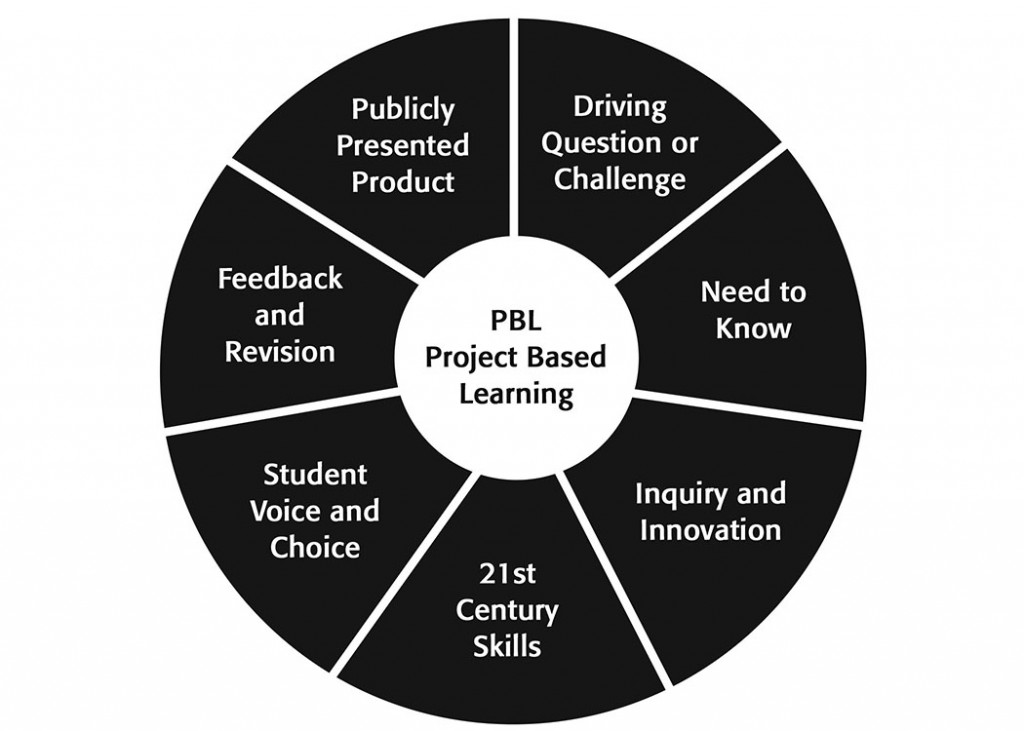 Canada in the 1960s8), it is enjoying a resurgence in the breadth of its implementation and the depth of study and sophistication being applied to its application. There are now extensive academic articles and several foundations that have developed excellent resources to assist schools with implementing PBL models that are effective, as PBL can be difficult to implement.
Canada in the 1960s8), it is enjoying a resurgence in the breadth of its implementation and the depth of study and sophistication being applied to its application. There are now extensive academic articles and several foundations that have developed excellent resources to assist schools with implementing PBL models that are effective, as PBL can be difficult to implement.
In PBL learning models, students often have the option to choose a problem they want to solve, or a project they want to complete. They work in small teams (six to 10 students), and ideally they test several solutions to the problem. PBL emphasizes collaborative and self-directed learning and several studies have shown that PBL processes lead to gains in learning and long-term retention.9 10
Another concept in collaborative learning is Design Thinking. This process is centered in empathy and iteration. Students follow a specific series of actions, while working on a team to solve a problem. Design Thinking’s roots go back to books written in the late 1960s and early 1970s. It’s gained momentum through work done by David M. Kelley (founder of IDEO), and the Stanford Design School.
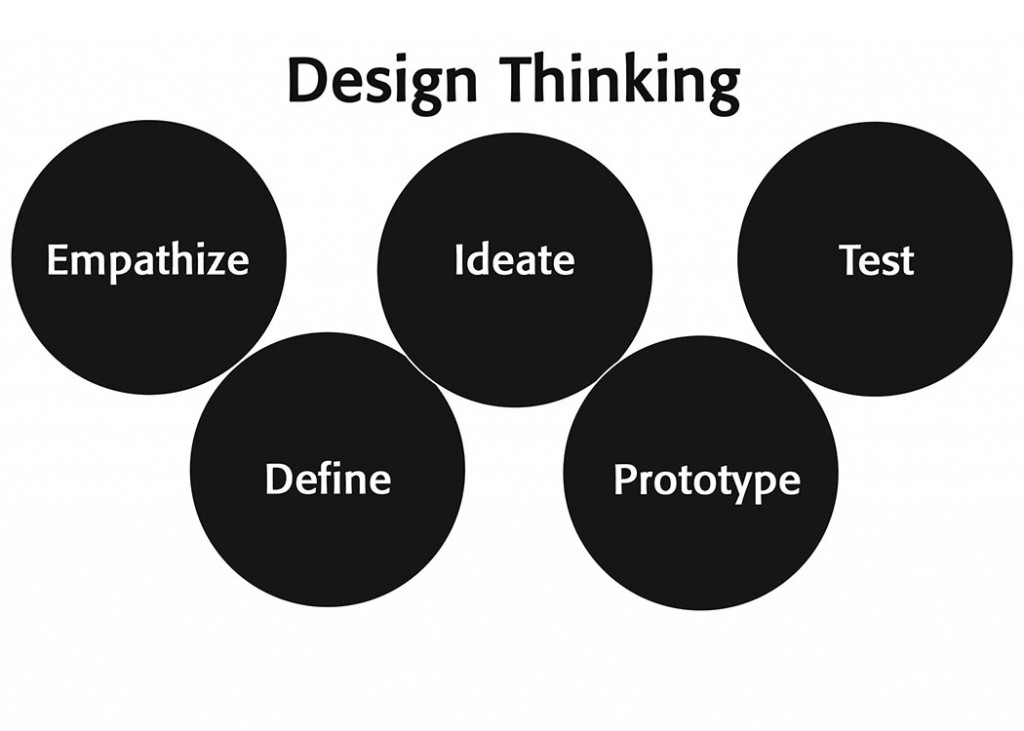 The Design Thinking model is illustrated in several different ways, most of which involve the definition of a problem, a process to gather information that includes empathizing with the people impacted by the problem, creation of many hypotheses about solutions, testing a hypothesis, making adjustments (iterating), and testing again. Students that learn a problem-solving framework, such as Design Thinking, get to exercise their creativity and innovative side, while doing so within a structure that can be used to solve many different kinds of problems.
The Design Thinking model is illustrated in several different ways, most of which involve the definition of a problem, a process to gather information that includes empathizing with the people impacted by the problem, creation of many hypotheses about solutions, testing a hypothesis, making adjustments (iterating), and testing again. Students that learn a problem-solving framework, such as Design Thinking, get to exercise their creativity and innovative side, while doing so within a structure that can be used to solve many different kinds of problems.
5. Assessment methods. The multiple choice test is not quite dead, but it’s on its way out. Schools are utilizing a wide variety of assessment methods that push students to prepare materials differently and demonstrate their learning in more meaningful ways.
In the two documentary films mentioned above, Most Likely to Succeed, and Beyond Measure, students demonstrated their learning through exposition – the presentation of completed projects which is followed by the student answering in-depth questions about their process, and the knowledge they gained while working on the project.
The argument in these “authentic assessment” methods is that knowledge can be gained through any smart internet device, so it’s far less important for a student to be able to memorize and reproduce facts, and far more important for a student to develop research methods, the ability to communicate effectively and present what they’ve learned to others, and to be able to manage themselves through a complex project (ask questions, find answers, develop solutions, think critically and creatively, work with a team, etc).
These assessment methods also more closely mimic the environment they are likely to encounter in the real world. Their bosses will present them with challenges, they’ll work under time constraints to answer the questions and produce solutions.
Rarely, if ever, do we encounter a situation in the world of work where we’re cramming our heads with knowledge so we can pass an exam.
Another trend in the world of assessment is that of iterative testing. Innovative K-12 charter programs such as Arizona State Preparatory Academy based in the Phoenix, AZ area, zeroed in on the fact that the goal of a course is to ensure students learn the material – not that they can pass the test. When a student in one of their classes earns a B- or lower grade, they are offered the opportunity to do additional work and retake an exam, or edit and resubmit an assignment.
The goal of iterative testing is to ensure that the information is mastered. This process creates a safer learning environment for students and alleviates some of the anxiety that often comes with a test or large assignment.
6. Technology as a learning enabler. Budgets don’t always support large-scale technology implementations, but many schools are taking advantage of the wide-spread use of mobile devices (well over 90 percent of university students own or have access to a tablet or smartphone). These mobile tools can be used for classroom polling which provides instructors access to real-time information about how well students are understanding material, and can also increase student agency when instructors use polling devices to gauge how students are feeling about their own mastery of the material.
Low-cost devices are now also widely available, such as the $49 Chrome Books and similarly inexpensive tablets. Schools purchase these and use them as a classroom kit – so not every class has the computers for every lesson, but every class has the ability to reserve the computers and instructors can build lesson plans that utilize the technology.
This also builds critical computer literacy and information literacy skills for students who will go into a world that is changing at an ever-increasing pace. When the computers are used in the classroom, instructors can assist students with discerning which sites should be trusted as information resources as well as helping students identify and utilize excellent research strategies that will be helpful in their real-world jobs.
Learning more than just the times tables
The common themes that emerge throughout these innovations focus on the Habits of Mind we mentioned at the top of the article – persistence, teamwork, application of knowledge, self-discipline, impulse control, and more.
This changes everything for higher education. When students come into our classrooms who are accustomed to these open-ended problem-based learning challenges, or self-directed course content, it is jarring to be met with traditional style education which is one-directional – from teacher to student. Schools will struggle to retain students if they can’t adapt to the new teaching and assessment methods.
What’s more, these new teaching and assessment methods appear to be producing students that are better prepared to do well in job interviews, and to be more successful in their work overall. Perhaps most importantly, when implemented properly, these teaching innovations build persistence and grit in students because they build a sense of hope, and show students that iterating, adapting, prototyping is creative and almost always leads to a better outcome.
With changes in the regulatory world bearing down on career schools, it’s more important than ever to ensure that 100 percent of the graduates are ready to go to work. These teaching innovations not only keep the classrooms engaging, they are also proven as effective ways to build the skills necessary for students to not just get the job – but also keep the job and get the promotion.
Resources
1. Costa and Kallick (2008), Learning and Leading with Habits of Mind: 16 Essential Characteristics for Success, Association for Supervision and Curriculum Development. (http://www.ascd.org/publications/books/108008/chapters/Describing-the-Habits-of-Mind.aspx)
2. “Flipping a Class.” Retrieved August 29, 2016, from http://facultyinnovate.utexas.edu/node/320, University of Texas at Austin, Faculty Innovation Center
3. “Just in Time Teaching.” Retrieved August 29, 2016, from http://jittdl.physics.iupui.edu/jitt/
4. Crouch & Mazur, 2012
5. Crouch, Watkins, Fagen & Mazur (2007). Retrieved August 26, 2016, http://mazur.harvard.edu/sentFiles/Mazurpubs_537.pdf
6. Eric Mazur, Peer Instruction: A User’s Manual (Prentice Hall, 1997). Additional information and resources for PI can be found at http://galileo.harvard.edu.
7. Ferguson, Phillips, Rowley, Friedlander (2015). “The Influence of Teaching. Beyond Standardized Test Scores: Engagement, Mindsets and Agency,” Retrieved August 20, 2016 here: http://www.agi.harvard.edu/projects/TeachingandAgency.pdf
8. “Problem-Based Learning Curriculum A Success for Medical School” (2006). Retrieved on August 22, 2016 from http://www.medicalnewstoday.com/releases/55419.php
9. Hmelo-Silver, Cindy E.; Duncan, Ravit Golan; Chinn, Clark A. (2007). “Scaffolding and Achievement in Problem-Based and Inquiry Learning: A Response to Kirschner, Sweller, and Clark (2006)”. Educational Psychologist. 42 (2): 99–107.doi:10.1080/00461520701263368
10. Cotič, Mara; Zuljan, Milena Valenčič (2009). “Problem‐based instruction in mathematics and its impact on the cognitive results of the students and on affective‐motivational aspects”. Educational Studies. 35(3): 297–310.
MARTHA LANAGHEN is the CEO and Founder of The Sparrow Group (SparrowGroup.biz), a consulting firm that works with universities around the world to build programs that engage students and create strong bridges from college to career.
Contact Information: Martha Lanaghen // CEO and Founder // The Sparrow Group // 303-257-6222 // Martha@SparrowGroup.biz

